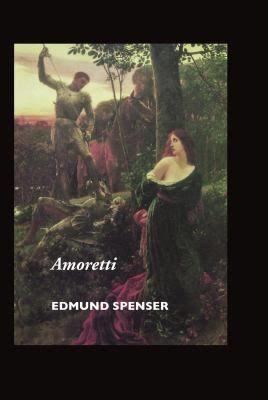Originally published 1595 | ||
 | ||
Similar Works by Edmund Spenser, Other books | ||
Amoretti is a sonnet cycle written by Edmund Spenser in the 16th century. The cycle describes his courtship and eventual marriage to Elizabeth Boyle.
Contents
Amoretti was first published in 1595 in London by William Ponsonby. It was printed as part of a volume entitled Amoretti and Epithalamion. Written not long since by Edmunde Spenser. The volume included the sequence of 89 sonnets, along with a series of short poems called Anacreontics and Epithalamion, a public poetic celebration of marriage. Only six complete copies remain today, including one at the Folger Shakespeare Library in Washington, D.C. and one at Oxford's Bodleian Library. “The volume memorializes Spenser’s courtship of Elizabeth Boyle, a young, well-born Anglo-Irish woman, and the couple’s wedding on June 11, 1594”. In the sonnets of Amoretti Spenser succeeds in "immortalizing the name of his bride to be ... by devices of word play".
Amoretti has been largely overlooked and unappreciated by critics, who see it as inferior to other major Renaissance sonnet sequences in the Petrarchan tradition. In addition, it has been overshadowed by Spenser’s other works, most notably The Faerie Queene, his epic allegorical masterpiece. C. S. Lewis, among the most important twentieth century Spenser scholars, said that “Spenser was not one of the great sonneteers”. However, other critics consider Spenser’s sonnets to be innovative and to express a range of tones and emotions, and are much more skillful and subtle than generally recognized.
Edmund spenser amoretti sonnet 1 explained
Petrarchan context
The sonnets of Amoretti draw heavily on authors of the Petrarchan tradition, most obviously Torquato Tasso and Petrarch himself. “In Amoretti, Spenser often uses the established topoi, for his sequence imitates in its own way the traditions of Petrarchan courtship and its associated Neo-Platonic conceits”. Apart from the general neo-platonic conceit of spiritual love in opposition to physical love, he borrows specific images and metaphors, including those that portray the beloved or love itself as cruel tormenter. Many critics, in light of what they see as his overworking of old themes, view Spenser as being a less original and important sonneteer than contemporaries such as Shakespeare and Sir Philip Sidney.
However, Spenser also revised the tradition that he was drawing from. Amoretti breaks with conventional love poetry in a number of ways. In most sonnet sequences in the Petrarchan tradition, the speaker yearns for a lover who is sexually unavailable. Not only is there a conflict between spiritual and physical love, but the love object is often already married; it is an adulterous love. “Spenser’s innovation was to dedicate an entire sequence to a woman he could honorably win”. Elizabeth Boyle was an unmarried woman, and their love affair eventually ended in marriage.
In addition, the Petrarchan tradition tends to be obsessed with the instability and discontinuity of the love situation. The speaker’s feelings, thoughts, and motives continually change and shift. The love situation is fraught with egotism, conflict, and continual transformations within the speaker. These conflicts are never resolved, but continue on endlessly as the poet is continually frustrated by the rejection of his beloved or his inability to reconcile spiritual and physical love. While Petrarch finds some semblance of resolution in rejection of physical love and the subsequent death of his beloved, and Renaissance Petrarchism tends to ignore resolution and glorify the state of indeterminacy, Spenser finds his own unique solution. He eventually moves away from the constant transformation and self-absorption of the Petrarchan love situation, and towards the “peace and rest Spenser finds in the sacred world of marriage”. He represents the Protestant conception of marriage, celebrating it as a sanctuary in which two people can find peace and rest in a mutual love covenant, in which spiritual and physical love can exist in harmony rather than as contraries.
